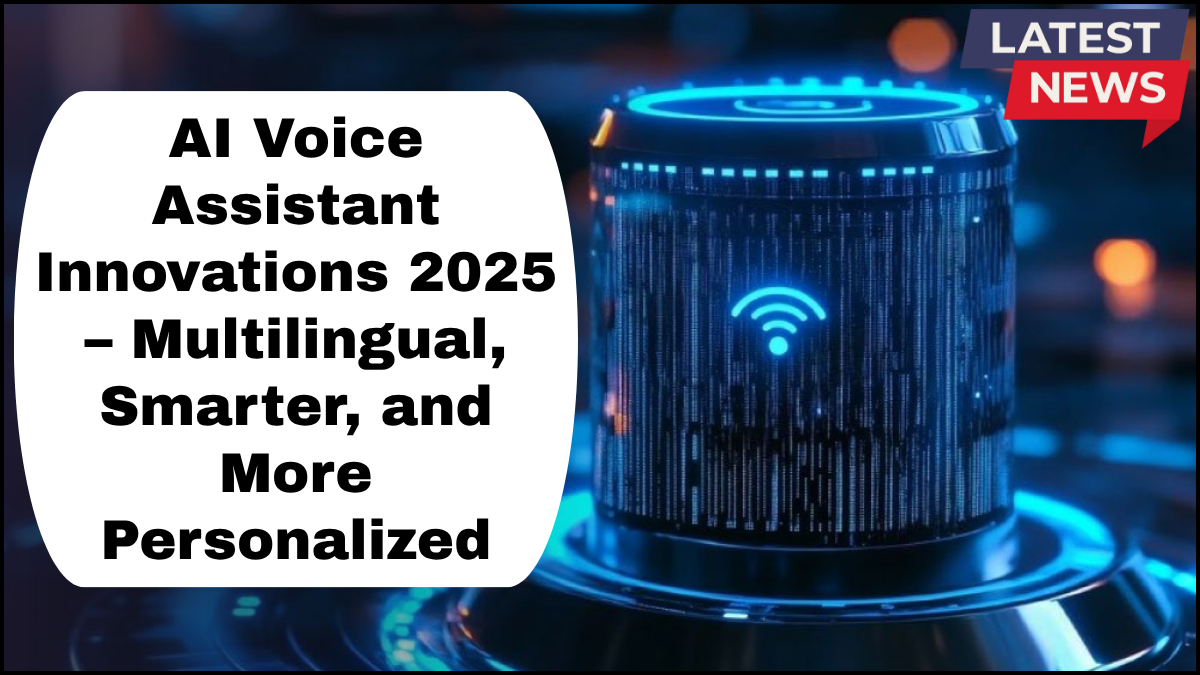The AI voice assistant evolution has reached a pivotal stage in 2025. What began as basic command-based tools has grown into a powerful interface for managing everything from smart homes to business workflows. Today’s AI voice assistants are no longer just reactive—they’re proactive, multilingual, hyper-personalized, and contextually aware.

Let’s explore the innovations defining this new era.
Smarter AI Assistants with Contextual Understanding
Voice assistants in 2025 don’t just respond—they understand. Powered by advancements in natural language understanding (NLU) and machine learning, these systems now grasp context across conversations. For example, if you ask, “Who won the game last night?” followed by, “And when’s their next match?” the assistant links both queries without needing you to restate which team you’re talking about.
What sets these newer models apart is their situational awareness. They remember preferences, understand tone, and adjust responses accordingly. They can even sense urgency, formality, or emotional cues, allowing them to act as adaptive communication partners rather than just voice-driven search engines.
The Rise of Multilingual AI Assistants
One of the most transformative shifts in the AI voice assistant evolution is the rise of multilingual AI assistants. In 2025, seamless code-switching between languages is not just possible—it’s smooth and natural.
Users can start a query in English, switch mid-sentence to Hindi or Spanish, and finish in yet another language. Assistants now support regional dialects, slang, and idiomatic expressions, making them more inclusive and effective worldwide.
A teacher in São Paulo can use Portuguese to ask a voice assistant to prepare an English-language lesson plan. A traveler in Tokyo can get directions in English but receive them spoken in Japanese to share with a local taxi driver. These multilingual systems are also being deployed in education, healthcare, and customer service to break down communication barriers like never before.
Hyper-Personalization: Assistants That Know You
The push toward hyper-personalization means voice assistants now deliver responses tailored not just to your preferences, but also to your behavior, routines, and current context.
For example:
-
If your calendar shows a busy day ahead, the assistant might suggest quick meals or schedule breaks.
-
If it detects you’re driving, it prioritizes hands-free brief responses.
-
It learns your morning routine—waking you with your preferred news source, brewing coffee via your smart machine, and adjusting the lights and temperature to your liking.
These assistants integrate with wearables, smart home systems, and IoT devices, creating a living, learning ecosystem around the user. With secure on-device learning and federated AI models, privacy is preserved while personalization deepens.
Voice Assistants at Work: From Office to Factory Floor
Beyond personal use, AI voice assistants are now indispensable in professional settings. In offices, they manage emails, summarize meetings, and even analyze data through voice commands. In industrial environments, voice assistants are used for hands-free logging, equipment status updates, and safety alerts—all in real time.
This evolution supports hands-free productivity, making AI voice assistants essential tools for remote work, fieldwork, and high-mobility tasks. Integration with platforms like Microsoft 365, Salesforce, or industry-specific CRMs ensures assistants are both accessible and functional across verticals.
Emotionally Intelligent and Ethical AI
In 2025, AI voice assistants aren’t just more capable—they’re more emotionally intelligent. They recognize when users are stressed, upset, or unwell, and adapt responses accordingly. This is especially valuable in eldercare and mental health support, where tone-sensitive interaction can make a difference in well-being.
Additionally, the focus on ethical AI has led to voice assistants that prioritize transparency, consent, and data control. Users can view and delete conversations, opt out of data sharing, and control how much personalization they want.
FAQs
Q1: How do AI voice assistants in 2025 differ from those a few years ago?
AI voice assistants in 2025 offer advanced contextual understanding, real-time multilingual capabilities, emotional awareness, and deep personalization that surpass the limited, command-only functionality of earlier models.
Q2: What are multilingual AI assistants used for?
They’re used in travel, education, healthcare, customer service, and even multilingual households to provide seamless voice interaction across languages and dialects without needing manual switching.
Q3: Are personalized AI assistants safe for privacy?
Yes. Modern assistants use on-device processing and privacy-first learning methods like federated AI. Users can access, manage, or delete their personal data anytime.
Q4: Can AI voice assistants now be used in professional settings?
Absolutely. They support tasks like scheduling, note-taking, workflow automation, and data analysis across industries—from offices to factories—boosting productivity and accessibility.
Q5: What’s next for the AI voice assistant evolution?
Expect even deeper integration with AR/VR systems, enhanced emotional intelligence, and predictive AI that not only understands what you say, but anticipates what you need before you ask.
click here to learn more
